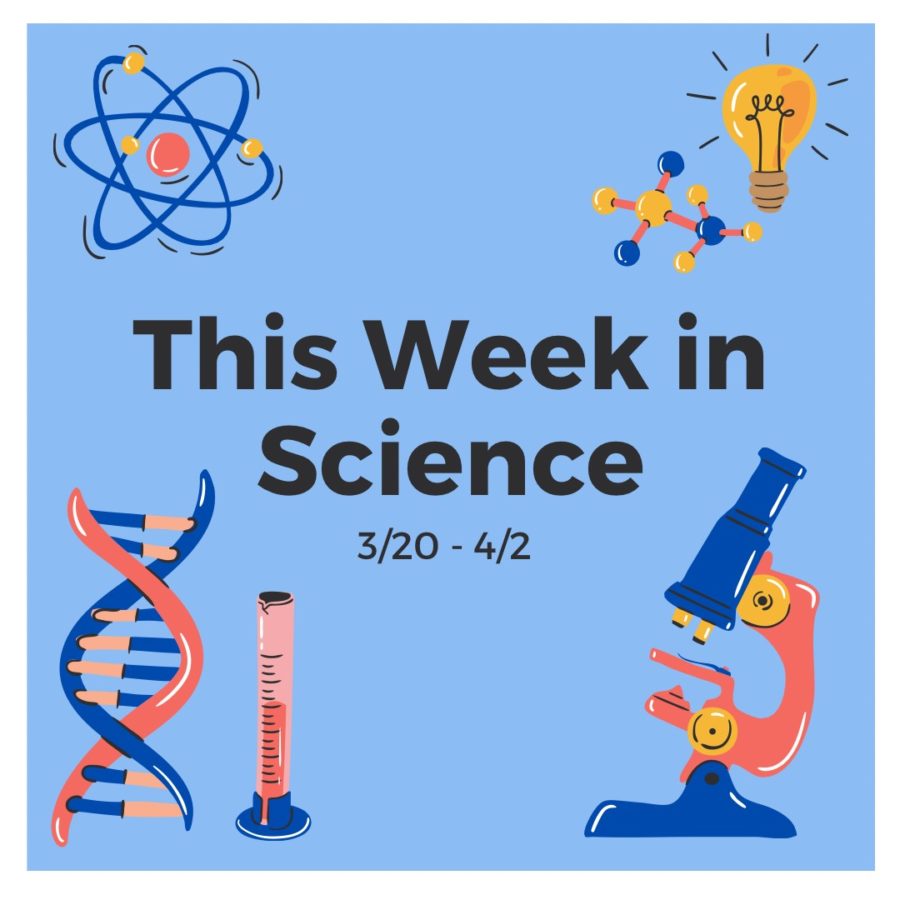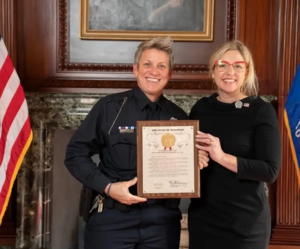This Spring Break in Science: 3/20 – 4/2
April 28, 2023
3/21 – How Marsupial Lions Saw the World (Paleontology and Fossils)
We normally think of marsupials as being like opossums or kangaroos, mostly herbivorous creatures found in Australia, but millions of years ago, these creatures were actually found in South America, some even being carnivorous. This was the case for the strange and unusual Thylacosmilus atrox, a predator that grew long canine teeth and hunted large animals around it like a modern lion, but this predator was unlike it in many ways. In a study published on March 21, scientists researched the eyes and skull of this remarkable animal.
Before looking at the eyes, we must look at the teeth. The teeth of T. atrox are the most distinctive feature of the animal, with them extending past the gums and into the skull itself. Compared to the head, the teeth of Thylacosmilus are abnormally large, with even cats like Smilodon and Barbourofelis paling in comparison to this animal’s. Charlène Gaillard, a Ph.D. student in the Instituto Argentino de Nivología, Glaciología, y Ciencias Ambientales (INAGLIA) confronted the large teeth saying “They weren’t just large; they were ever-growing, to such an extent that the roots of the canines continued over the tops of their skulls. This had consequences, one of which was that no room was available for the orbits in the usual carnivore position on the front of the face.”
Gaillard used CT scanning and 3D virtual reconstructions to assess orbital organization in a number of fossil and modern mammals. She was able to determine how the visual system of Thylacosmilus would have compared to those in other carnivores or other mammals in general.
4/2 – Water Found in Moon Samples (Astronomy and Space)
This Spring Break, a team of scientists have discovered water found on Moon rock samples. They were found on a lunar mission executed by China and the samples were returned to Earth in 2020, but were not examined until now.
Water was found in moon rocks by examining thirty-two small glass-like beads that were randomly selected out of hundreds. They were examined primarily by Hejiu Hui of Nanjing University. Since there are billions if not trillions of these impact beads, that could amount to substantial amounts of water, but mining it would be tough, according to the team.
“Yes, it will require lots and lots of glass beads,” Hui said in an email to Marcia Dunn of Phys.org. “On the other hand, there are lots and lots of beads on the moon.”
This discovery can shape what we know about space and the astral bodies that inhabit it like the Moon and Mars. What if other planets had these beads, and what would that mean for alien life based in water?
4/2 – The Dinosaur Lip Debate is Finally Over (Paleontology and Fossils)
Although the theory has been around for over a decade, scientists now have proof that a lot of dinosaurs had fleshy “lips”. This idea has been floating around in the paleontology community for quite some time, and although many people dispute it, there is now solid proof that dinosaurs indeed had lips. In a study published during this Spring Break, scientists from the University of Toronto Mississauga have analyzed teeth from Daspletosaurus torosus to find out what was covering them.
D. torosus was a medium sized predator from southern Alberta, a region known for hosting a slew of fossils. This specific animal was a close relative of the mighty Tyrannosaurus, one of the most studied prehistoric organisms of all time. What paleontologists did was carefully cut into a tooth and fill the holes with resin. This showed that surprisingly, a significant portion of the tooth experienced almost no damage. To compare, an alligator’s teeth, which are exposed, go through a large amount of weathering, with the average individual going through almost 3,000 teeth in a lifetime.
Additionally, the team compared skull lengths and tooth sizes of more than 20 fossilized theropod dinosaurs and several other lizard species. They found that, like the Komodo dragon, the T. rex could seemingly fit its chompers behind a lipped mouth.
Sources














